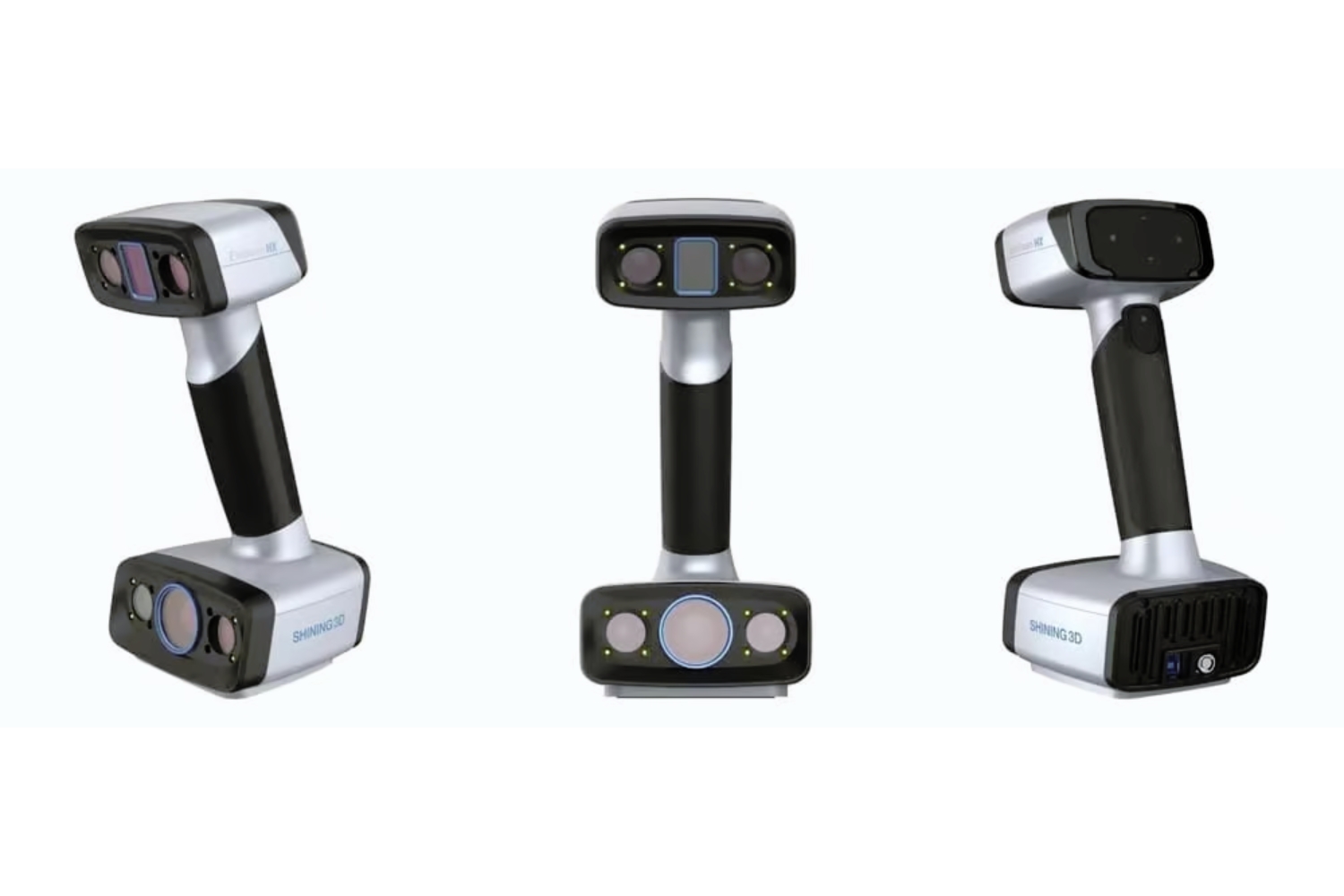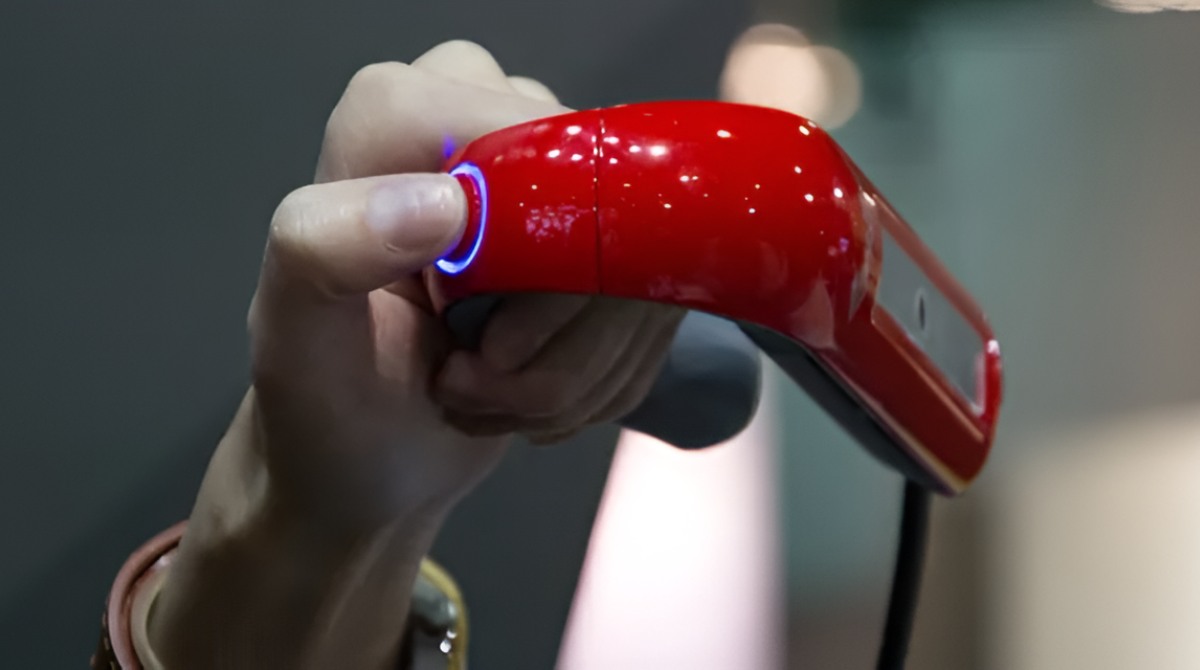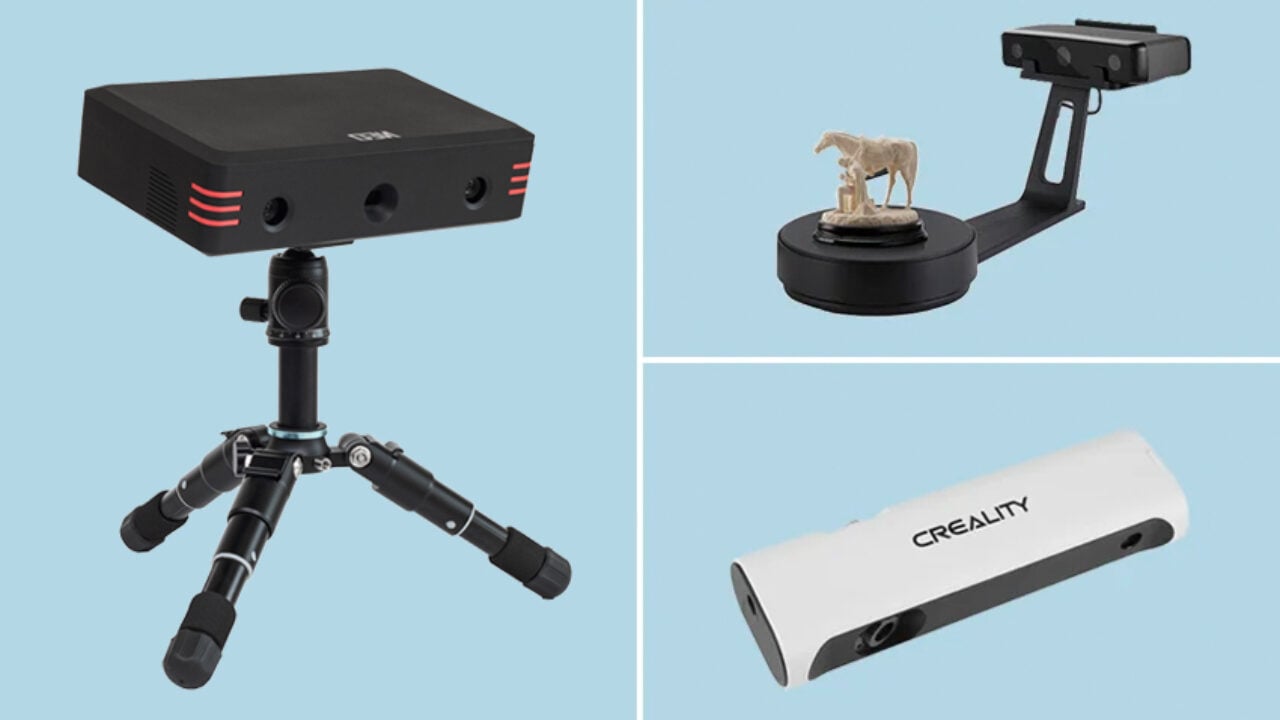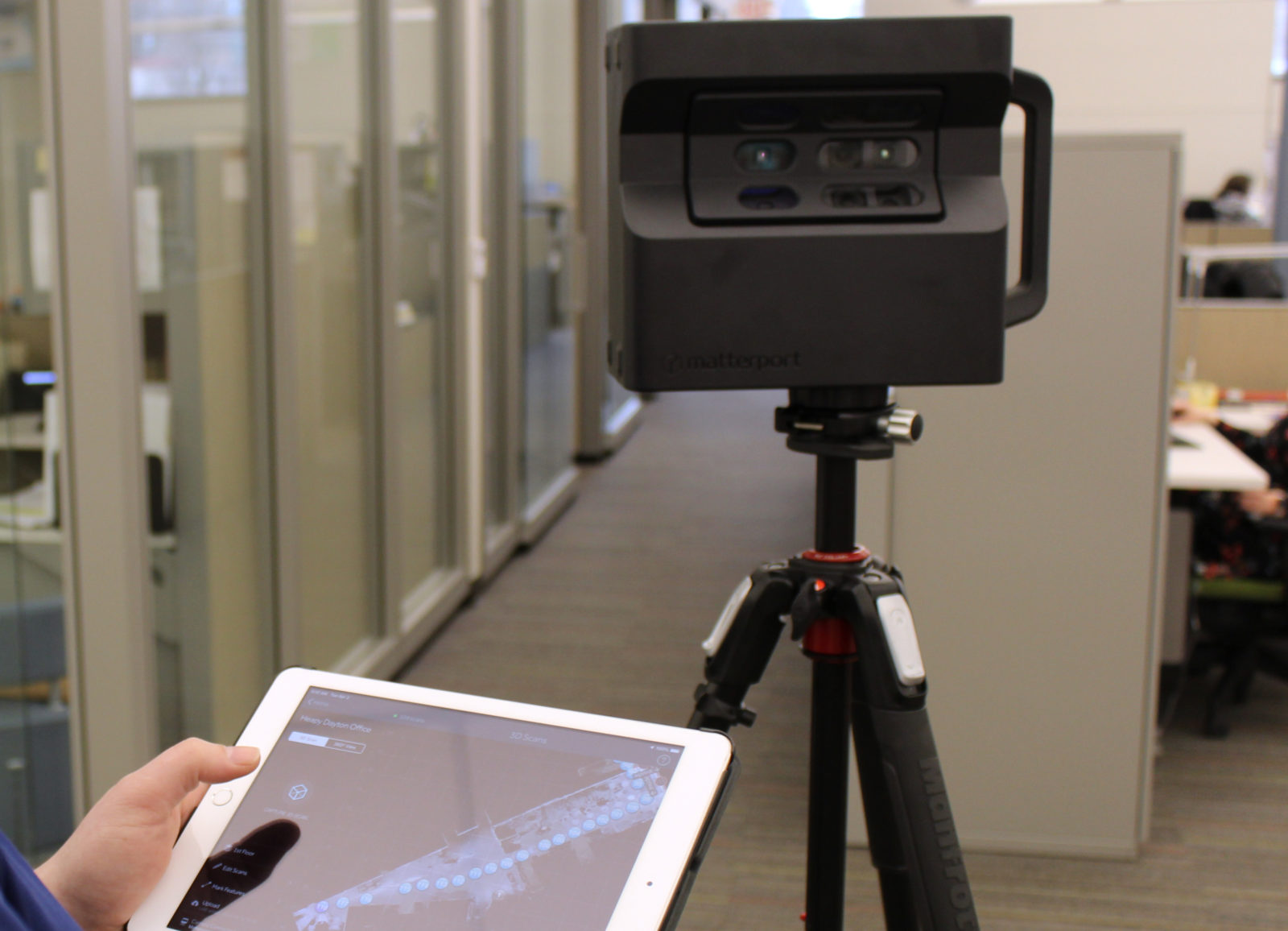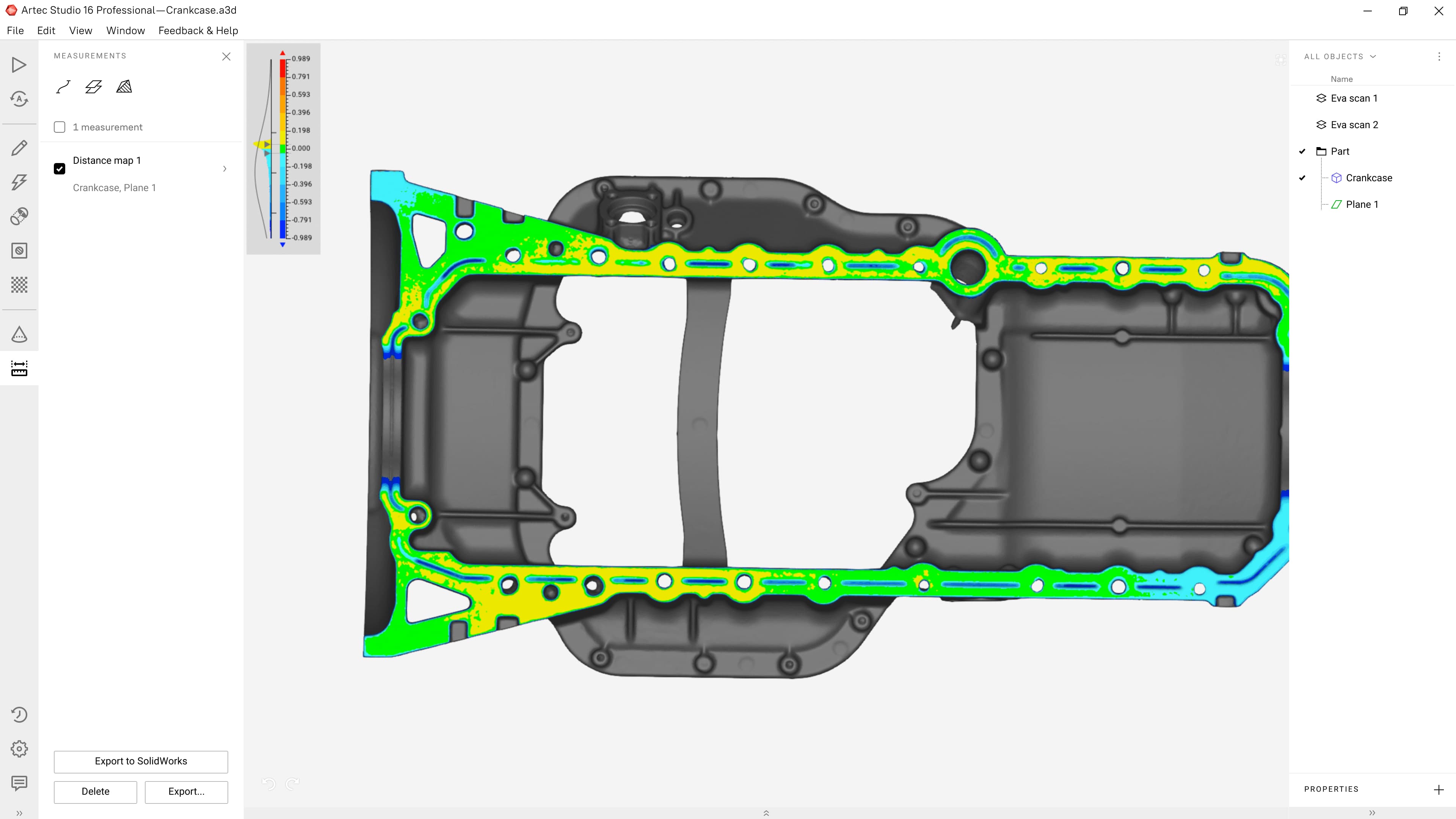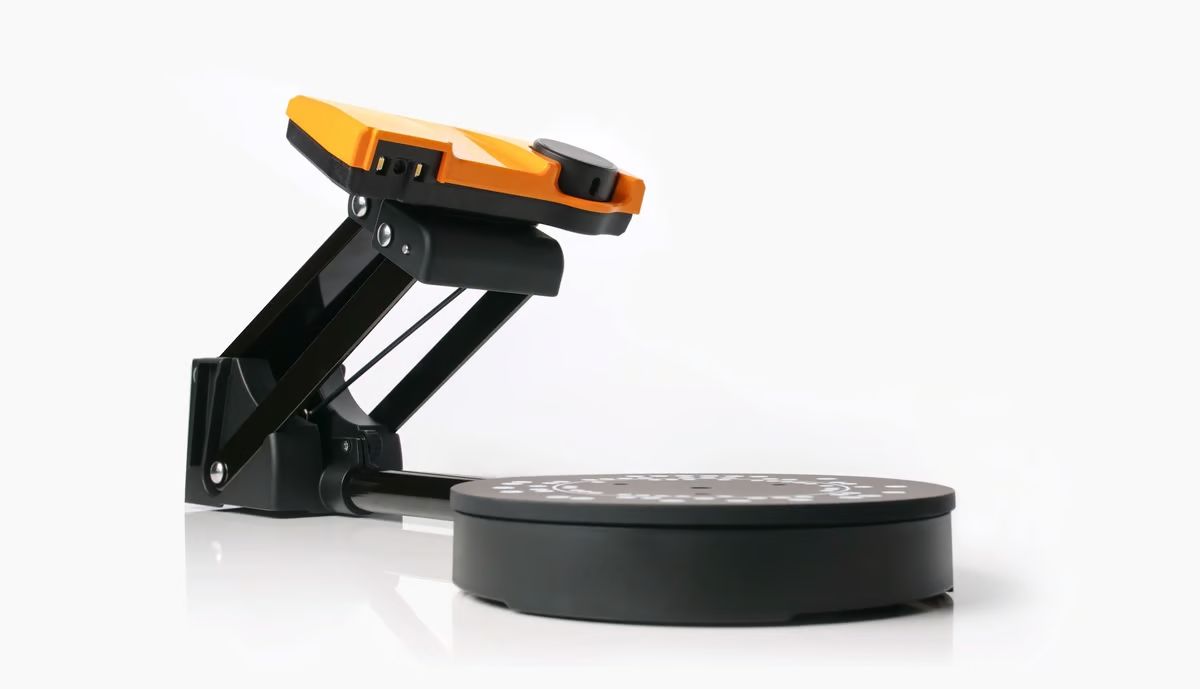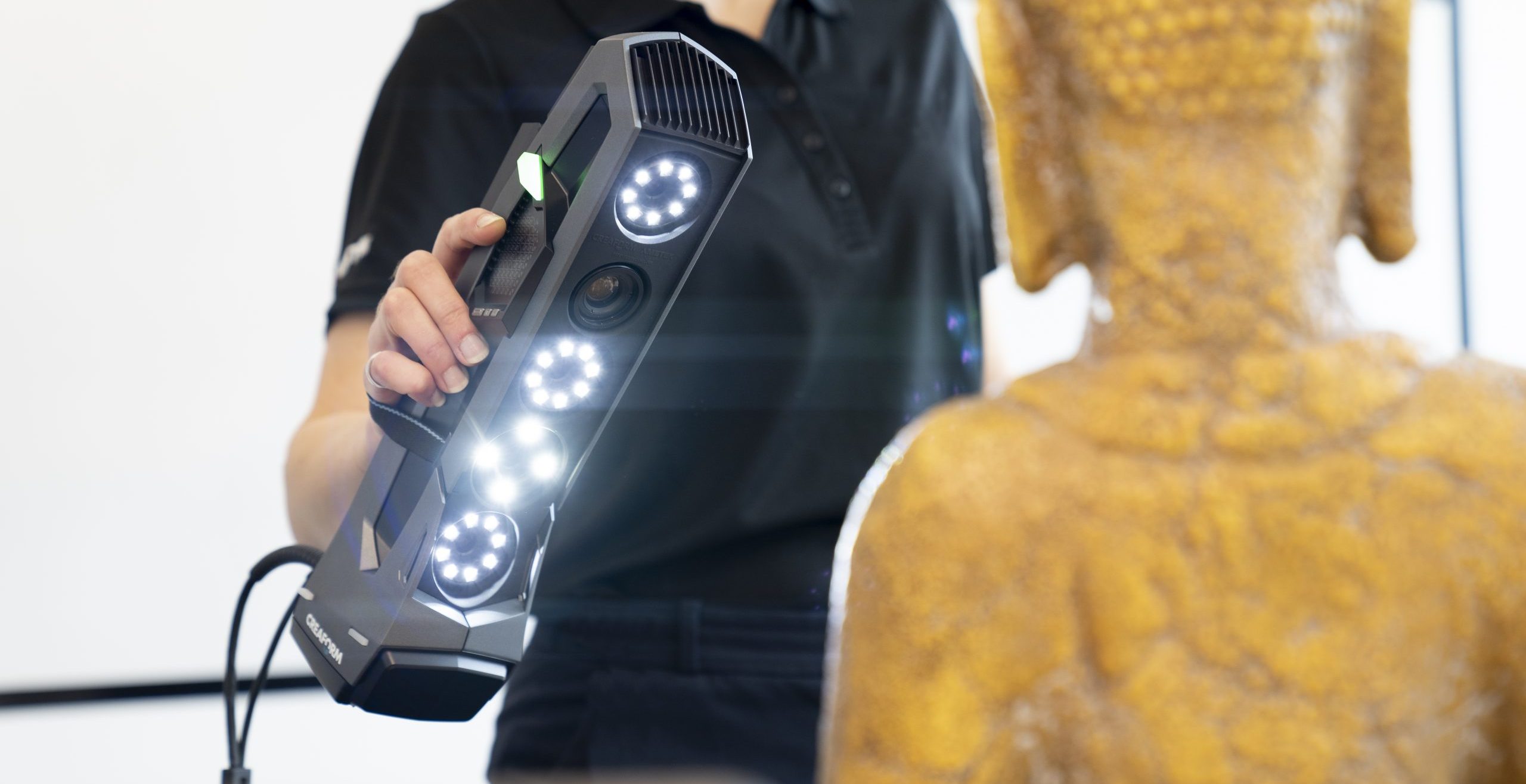Introduction
3D scanning technology has revolutionized various industries by enabling the rapid capture of real-world objects and environments, converting them into digital models with incredible precision. This process has opened up new possibilities in fields such as manufacturing, engineering, architecture, and even entertainment. With the ability to accurately capture and reproduce physical objects in a virtual form, 3D scanners have become indispensable tools for many professionals and hobbyists alike.
A 3D scanner is a device that uses different technologies to capture the shape, size, and texture of an object or environment. It creates a digital representation of the physical entity in the form of a 3D model that can be manipulated, measured, and replicated. The process involves scanning the object from multiple angles, capturing the geometry and surface properties to create a detailed virtual replica.
In this article, we will explore the different types of 3D scanners available on the market, the factors to consider when choosing one, and the various applications for this incredible technology.
Types of 3D Scanners
There are several types of 3D scanners available, each utilizing different technologies to capture the geometry and texture of objects or environments. Let’s take a look at the most common types:
- Laser Scanners: Laser scanners use a laser beam to measure the distance to an object and create a point cloud of data. These scanners emit a laser and measure the time it takes for the laser to bounce back after hitting the object’s surface. The result is a highly accurate representation of the object’s shape and dimensions. Laser scanners are ideal for capturing fine details, making them popular in industries such as automotive, aerospace, and art preservation.
- Structured Light Scanners: Structured light scanners project a pattern of light onto an object and use cameras to capture its deformation. By analyzing the distortions in the projected pattern, the scanner can calculate the object’s shape and texture. This type of scanner is commonly used in industries like archaeology, product design, and computer graphics.
- Photogrammetry Scanners: Photogrammetry scanners use a collection of photographs taken from different angles to reconstruct a 3D model of an object or environment. By identifying common features in the images, the scanner can calculate the object’s position and shape. This technology is widely used in fields like virtual reality, gaming, and cultural heritage preservation.
- Time-of-Flight Scanners: Time-of-flight scanners emit light or laser pulses and measure the time it takes for the light to bounce back from the object’s surface. By calculating the differences in the reflection times, the scanner can determine the object’s distance and shape. Time-of-flight scanners are commonly used in applications like robotics, architecture, and medical imaging.
Each type of 3D scanner has its own strengths and weaknesses, and choosing the right one depends on the specific requirements of your project. Factors such as accuracy, ease of use, and cost should be carefully considered before making a decision. Now that we have explored the different types of 3D scanners, let’s move on to discussing the factors you should consider when choosing a scanner.
Laser Scanners
Laser scanners are a popular type of 3D scanner that uses laser technology to capture the geometry and surface characteristics of objects. These scanners emit a laser beam onto the object’s surface and measure the time it takes for the laser to bounce back. This information is then used to create a point cloud, which represents the object’s shape and dimensions with high accuracy and precision.
One of the main advantages of laser scanners is their ability to capture fine details. The laser beam can be focused and adjusted to capture intricate features of an object, making them ideal for industries that require precise measurements and high-resolution models. Laser scanners are commonly used in automotive design, engineering, architecture, art preservation, and quality control.
There are two types of laser scanners: contact-based and non-contact-based scanners. Contact-based laser scanners require physical contact with the object’s surface, using a probe or stylus to measure the geometry. These scanners are best suited for objects that are small and can be easily manipulated.
On the other hand, non-contact-based laser scanners utilize sensors that can capture data without physically touching the object. These scanners are ideal for larger objects or delicate surfaces that may be damaged by direct contact.
Another important aspect of laser scanners is their ability to capture color information along with geometry. Some laser scanners use additional sensors, such as cameras, to capture the color information of the object. This allows for the creation of realistic and visually appealing 3D models that accurately represent the object’s appearance.
When choosing a laser scanner, it is essential to consider factors such as accuracy, scanning speed, ease of use, and compatibility with software and workflows. Laser scanners can vary in their scanning range, resolution, and portability. Understanding your project requirements will help you select the laser scanner that best fits your needs.
In summary, laser scanners are powerful tools for capturing detailed 3D data. They are widely used in various industries for precise measurements, quality control, and creating high-fidelity digital models. The ability to capture intricate details and color information makes laser scanners indispensable in many fields.
Structured Light Scanners
Structured light scanners are a type of 3D scanner that uses projected patterns of light to capture the geometry and texture of objects. These scanners emit a structured light pattern onto the object’s surface and use cameras to capture the deformations of the pattern. By analyzing the deviations in the projected light, the scanner can calculate the object’s shape and create a 3D model.
One of the main advantages of structured light scanners is their speed. They can capture 3D data quickly, making them suitable for applications that require fast scanning, such as quality control in manufacturing processes. Additionally, structured light scanners are capable of capturing both the geometry and color information of an object, resulting in highly detailed and visually appealing 3D models.
Structured light scanners can be further categorized into two types: active scanners and passive scanners. Active scanners emit their own light source, such as a projector, to create the structured light pattern. They provide better control over the lighting conditions and are suitable for scanning objects with complex shapes and surfaces. Passive scanners, on the other hand, rely on existing ambient light or external lighting sources to create the structured light pattern. They are more portable and can be used in outdoor or uncontrolled lighting environments.
Structured light scanners are commonly used in various industries, including product design, archaeology, computer graphics, and reverse engineering. They are especially useful for capturing detailed information on small to medium-sized objects with intricate features. Examples of applications include creating digital replicas of artifacts for preservation, generating 3D models for virtual reality experiences, and capturing surface textures for product design.
When selecting a structured light scanner, it is crucial to consider factors such as accuracy, scanning range, ease of use, and software compatibility. Some scanners may have higher resolution but limited scanning range, while others may offer more flexibility in terms of working distances. Evaluating these factors will help you choose the structured light scanner that best suits your specific needs.
In summary, structured light scanners utilize projected patterns of light to capture the shape and texture of objects. They excel in their speed of capturing data and their ability to capture both geometry and color information. Structured light scanners have numerous applications in various industries, ranging from product design to archaeology, and provide detailed and visually appealing 3D models.
Photogrammetry Scanners
Photogrammetry scanners are a type of 3D scanner that uses a collection of photographs taken from different angles to reconstruct a 3D model of an object or environment. By analyzing the common features present in the images, the scanner can calculate the object’s position, shape, and texture.
One of the main advantages of photogrammetry scanners is their versatility. They can be used to scan objects of various sizes, from small handheld items to large architectural structures. Additionally, photogrammetry scanners do not require direct contact with the object, making them suitable for capturing fragile or delicate subjects.
Photogrammetry scanners offer a high level of detail in the resulting 3D models. By combining multiple photographs taken from different viewpoints, they can capture fine surface details and textures, resulting in realistic and visually appealing models.
There are different methods of capturing the photographs for photogrammetry scanning. It can be done with a single camera, capturing multiple photos while moving around the object, or using multiple cameras simultaneously to capture the same scene from different angles. The images are then processed using photogrammetry software, which analyzes the common features and reconstructs the 3D model.
Photogrammetry scanners have a wide range of applications, including virtual reality, gaming, cultural heritage preservation, and even surveying and mapping. They are often used to create immersive experiences, realistic visualizations, and accurate measurements.
When selecting a photogrammetry scanner, it is important to consider factors such as image resolution, camera quality, software support, and computational power. Higher resolution images and cameras can result in more accurate and detailed 3D models. Additionally, efficient software and hardware configurations can greatly impact the speed and quality of the scanning process.
In summary, photogrammetry scanners offer a versatile and detail-oriented approach to 3D scanning. By utilizing photographs taken from different angles, they can reconstruct highly accurate and realistic 3D models. Photogrammetry scanners have applications in various fields, including entertainment, cultural preservation, and surveying.
Time-of-Flight Scanners
Time-of-flight scanners are a type of 3D scanner that measures the time it takes for light or laser pulses to travel to an object’s surface and back to the scanner. By calculating the differences in reflection times, these scanners can determine the distance and shape of the object.
One of the main advantages of time-of-flight scanners is their ability to capture real-time data. They can provide instant feedback on the object’s geometry, making them suitable for applications such as robotics, architecture, and medical imaging.
Time-of-flight scanners can utilize different light sources, including lasers or LED arrays. The light source emits a pulse of light, and sensors in the scanner measure the time it takes for the light to reach the object and return. This information is used to calculate the distance and create a 3D representation of the object.
These scanners have a wide range of applications. In robotics, time-of-flight scanners are used for depth perception and obstacle avoidance. In architecture, they can be used to measure distances and capture building structures. In medical imaging, time-of-flight scanners are used to create detailed 3D models of patients’ bodies.
When choosing a time-of-flight scanner, it is important to consider factors such as accuracy, range, speed, and compatibility with software and workflows. The scanning range and resolution of the scanner should align with the requirements of your specific application. Additionally, ease of use and compatibility with software tools and workflows can greatly impact the efficiency of the scanning process.
It is worth noting that time-of-flight scanners may have limitations when it comes to capturing fine details and textures compared to other types of scanners. However, their real-time data capture and suitability for dynamic environments make them a valuable tool in certain applications.
In summary, time-of-flight scanners utilize the measurement of light or laser pulse travel time to capture the distance and shape of objects. They excel in providing real-time data and have applications in industries such as robotics, architecture, and medical imaging. Choosing a time-of-flight scanner involves considering factors such as accuracy, range, speed, and compatibility with software and workflows.
Factors to Consider When Choosing a 3D Scanner
Choosing the right 3D scanner for your needs can be a crucial decision that impacts the success of your project. Here are some important factors to consider when selecting a 3D scanner:
- Accuracy and Resolution: The accuracy and resolution of the scanner determine how detailed and precise your 3D models will be. Consider the tolerances and level of detail required for your specific application.
- Ease of Use: Look for a scanner that is user-friendly and has a straightforward setup process. Consider factors such as portability, weight, and ease of handling.
- Workflow and Software Compatibility: Ensure that the scanner is compatible with the software and tools you intend to use. It should be seamlessly integrated into your existing workflow to enhance efficiency.
- Cost and Budget: Consider your budget and the value you will receive from the scanner. Compare the features, capabilities, and pricing of different models to find the best fit for your requirements.
- Scanning Range and Volume: Evaluate the scanning range and volume offered by the scanner. This is important if you plan to scan objects of different sizes or need to capture large environments.
- Workflow Integration: Consider the ease with which the scanner integrates into your existing process. Look for compatibility with other hardware, software, and tools you use regularly.
- Support and Training: Determine if the manufacturer offers adequate support, training, and resources to help you make the most of your scanner. Look for online resources, tutorials, and a responsive support team.
- Application-Specific Requirements: Take into account any specific requirements of your application. Different industries may have unique needs in terms of scanning speed, accuracy, or the ability to capture certain features or materials.
By carefully considering these factors, you can make an informed decision when choosing a 3D scanner that aligns with your project goals and requirements.
Accuracy and Resolution
When selecting a 3D scanner, one of the crucial factors to consider is the accuracy and resolution it offers. Accuracy refers to how closely the scanner can capture the true measurements of an object, while resolution determines the level of detail visible in the captured 3D model.
Higher accuracy means that the scanned model closely matches the physical object. It is typically measured in terms of a percentage or a specific distance, such as ±0.1mm. Keep in mind that accuracy can be affected by factors such as the scanning technology, calibration, and the object’s surface characteristics. For applications that require precise measurements or quality control, a scanner with higher accuracy is essential.
Resolution, on the other hand, determines how fine the details in the 3D model will appear. It is often measured in terms of dots per inch (dpi) or points per millimeter (ppmm). Higher resolution scanners capture more data points, resulting in sharper and more detailed 3D models. This is especially important for applications that require clear visualization or capturing intricate features, such as fine texture or small objects.
It is important to note that accuracy and resolution are interconnected. Higher resolution may not always guarantee higher accuracy if the scanner’s calibration or other factors are not properly managed. Therefore, it is essential to evaluate both accuracy and resolution together to ensure the scanner meets your specific needs.
When considering the required accuracy and resolution, it is important to align them with the specific application. For example, industries such as manufacturing or engineering may require high accuracy for quality control and precise measurements, while applications in architectural design or entertainment may prioritize high resolution for realistic visualizations.
Furthermore, it is worth noting that higher accuracy and resolution often come at a higher cost. It is important to find a balance between the required level of accuracy and resolution and your budget constraints. Evaluating the trade-offs and considering the specific needs of your project will help you make an informed decision when choosing a 3D scanner with the appropriate accuracy and resolution.
Ease of Use
When selecting a 3D scanner, ease of use is a crucial factor to consider. An easy-to-use scanner can save time, increase productivity, and reduce the learning curve for users. Here are some aspects to evaluate when assessing the ease of use of a 3D scanner:
User Interface: The user interface of a 3D scanner should be intuitive and user-friendly. It should have clear navigation, well-organized menus, and easily accessible controls. A well-designed user interface allows users to quickly understand and operate the scanner efficiently.
Setup and Calibration: The setup process should be straightforward and hassle-free. Look for scanners that require minimal calibration or offer automatic calibration features. A scanner with easy setup and calibration reduces the time and effort required to start scanning.
Portability and Handling: Consider the weight, size, and ergonomics of the scanner. If you plan to scan objects in different locations or need mobility, a lightweight and portable scanner can be beneficial. Additionally, the scanner should be comfortable to handle for extended periods of use.
Scanning Speed: The scanning speed of the device is another important aspect of ease of use. A scanner that can capture data quickly without sacrificing accuracy allows for efficient workflow and reduces the time required for scanning larger objects or multiple objects.
Compatibility and Connectivity: Ensure that the scanner is compatible with the software and hardware tools you will be using. It should have the necessary connectivity options, such as USB or Wi-Fi, to easily transfer data to your computer or other devices.
Training and Support: Evaluate the availability of training resources and the level of customer support provided by the manufacturer. Look for comprehensive documentation, tutorials, and responsive customer service to assist you in the scanning process and address any issues or questions that may arise.
Workflow Integration: Consider how well the scanner integrates into your existing workflow. Look for compatibility with common file formats, software applications, and cloud-based platforms. Seamless integration enhances productivity and allows for streamlined data processing and sharing.
By considering these aspects of ease of use, you will be able to find a 3D scanner that fits well into your workflow and provides a user-friendly experience. An intuitive and easily accessible scanner allows users to focus on the scanning process and achieve efficient and accurate results.
Workflow and Software Compatibility
When choosing a 3D scanner, considering its compatibility with your existing workflow and software is essential. The scanner should seamlessly integrate into your workflow and be compatible with the software tools you use for data processing and analysis. Here are some key factors to evaluate in terms of workflow and software compatibility:
File Formats: Check whether the scanner supports common file formats such as STL (Standard Tessellation Language) or OBJ (Wavefront Object). These file formats are widely used for 3D models and ensure compatibility with various software applications.
Software Compatibility: Ensure that the scanner is compatible with the software you plan to use for processing, editing, and analyzing the acquired 3D data. Most scanners come with proprietary software, but they should also offer compatibility with third-party software tools commonly used in your industry.
Import and Export Capabilities: Evaluate the scanning software’s ability to import and export data in the required formats. This is important for seamless data transfer and integration with other software tools in your workflow.
Automation and Customization: Consider if the scanner software offers automated features, such as alignment algorithms or mesh repair functions. These can streamline the data processing workflow and save time. Additionally, check if the software allows for customization, such as creating scripts or adding plugins, to tailor it to your specific needs.
Cloud and Collaboration: Determine if the scanner software offers cloud-based storage or collaboration features. These features can simplify data sharing and collaboration with team members or clients in remote locations.
Hardware Integration: Evaluate whether the scanner can be easily integrated with other hardware devices or accessories, such as turntables or robotic arms. This integration can enhance the scanning workflow and enable automated or specialized scanning setups.
Training and Support: Consider the availability of training resources and technical support provided by the scanner manufacturer. Access to comprehensive documentation, tutorial videos, and responsive customer support can help you overcome any workflow or software-related challenges that may arise.
By evaluating the compatibility of a 3D scanner with your existing workflow and software tools, you can ensure smooth integration and enhance efficiency in data processing and analysis. Choosing a scanner that fits seamlessly into your workflow will save time and streamline your 3D scanning projects.
Cost and Budget
Cost is a significant factor when choosing a 3D scanner, and it is crucial to consider your budget and the value you will receive from the scanner. Here are some points to consider regarding cost and budget:
Initial Investment: Take into account the upfront cost of the 3D scanner. Scanners can range in price from a few hundred dollars for entry-level options to tens of thousands of dollars for high-end professional-grade scanners. Assess your budget and determine the maximum amount you are willing to invest.
Additional Costs: Consider any additional costs that may be associated with owning a 3D scanner. This could include software licenses, maintenance fees, calibration targets, or replacement parts. These ongoing expenses should be factored into your overall budget.
Return on Investment: Evaluate the potential return on investment (ROI) of the scanner. Consider the value it will bring to your projects, the time and labor it will save, and any potential new opportunities it may create. A scanner that provides a high ROI may justify a higher upfront cost.
Value for Your Needs: Assess the features and capabilities of the scanner in relation to your specific needs. Determine if the scanner offers the necessary accuracy, resolution, and scanning range required for your projects. Avoid paying for features you won’t utilize, but also ensure the scanner meets your minimum requirements.
Consider Total Cost of Ownership: Look beyond the initial purchase cost and consider the total cost of ownership over the scanner’s lifespan. This includes maintenance, upgrades, software licenses, and any consumables or accessories needed.
Used or Refurbished Options: If your budget is limited, consider purchasing a used or refurbished 3D scanner. Such options can provide cost savings without compromising the quality or functionality of the scanner. However, ensure that the scanner is in good working condition and comes with a warranty or guarantee.
Comparative Analysis: Compare the features, specifications, and prices of multiple scanners from different manufacturers. Look for customer reviews and testimonials to gauge their performance and reliability. This comparative analysis will help you uncover the best value for your budget.
Consider Long-Term Needs: Anticipate your future needs and growth when assessing the cost of a 3D scanner. Investing in a scalable solution might be more cost-effective in the long run if your projects and requirements are likely to expand.
By carefully considering the cost and budget factors, you can make an informed decision that aligns with your financial capabilities and provides the best value for your needs. Remember to strike a balance between your budget constraints and the features and capabilities required for your specific projects.
Applications for 3D Scanning
3D scanning has a wide range of applications across various industries, revolutionizing the way we capture, analyze, and interact with the physical world. Here are some key areas where 3D scanning is making a significant impact:
- Manufacturing and Engineering: 3D scanning is widely used in manufacturing and engineering to create digital copies of physical objects, analyze their dimensions, and perform quality control. It enables faster prototyping, reverse engineering, and efficient product development processes.
- Architecture and Construction: In the field of architecture, 3D scanning facilitates the capture of existing structures, buildings, and landscapes with high precision. Architects can use these 3D models to design renovations, create accurate floor plans, and visualize architectural concepts.
- Cultural Heritage Preservation: 3D scanning plays a vital role in preserving and documenting cultural heritage sites, artifacts, and artworks. It enables the creation of virtual archives, restoration of damaged artifacts, and the opportunity to share cultural treasures with a global audience.
- Entertainment and Media: 3D scanning is widely used in the entertainment industry for creating realistic visual effects, CGI animations, and character modeling. It allows for the digitization of actors, props, and sets, enhancing the immersive experience in movies, video games, and virtual reality.
- Healthcare and Medicine: Medical professionals utilize 3D scanning to capture patient anatomy, perform surgical planning, and create custom prosthetics and implants. It assists in improving patient outcomes, reducing surgery time, and enhancing the precision of medical interventions.
- Art and Design: Artists and designers use 3D scanning to digitize sculptures, artwork, and objects for replication, analysis, or modification. It enables the creation of precise models that can be scaled, 3D printed, or incorporated into digital artwork.
- Forensics and Crime Scene Investigation: 3D scanning aids in crime scene documentation, allowing investigators to accurately capture and analyze the scene in detail. It helps recreate the scene for analysis, present evidence in court, and assist with forensic investigations.
- Virtual Reality and Gaming: 3D scanning contributes to immersive virtual reality experiences and realistic gaming environments. It enables the creation of lifelike avatars, accurate 3D environments, and interactive virtual worlds.
These are just a few of the many applications of 3D scanning, showcasing its versatility and immense potential. As technology continues to advance, we can expect to see even more innovative and creative uses for 3D scanning in a wide range of industries.
Conclusion
3D scanning technology has revolutionized various industries, providing a powerful way to capture real-world objects and environments with high precision and accuracy. By converting physical entities into detailed digital models, 3D scanners have opened up new possibilities in fields such as manufacturing, engineering, architecture, healthcare, and entertainment.
In this article, we explored the different types of 3D scanners, including laser scanners, structured light scanners, photogrammetry scanners, and time-of-flight scanners. Each type offers unique advantages and is suited for specific applications. It is important to consider factors such as accuracy, resolution, ease of use, software compatibility, cost, and the specific requirements of your projects when choosing a 3D scanner.
We also discussed the diverse applications of 3D scanning across various industries. From manufacturing and architecture to entertainment and healthcare, 3D scanning has enabled advancements in design, visualization, quality control, and preservation. It has brought enhanced precision, efficiency, and realism to industries that rely on accurate digital representations of physical objects and environments.
As technology continues to evolve, we can expect 3D scanning to become even more indispensable in numerous fields. Advancements in scanning quality, speed, and portability will continue to expand the possibilities for 3D scanning applications. Whether it is in creating lifelike virtual reality experiences, preserving cultural heritage, or advancing medical interventions, 3D scanning will continue to drive innovation and transformation in various industries.
In conclusion, 3D scanning is a powerful tool that empowers professionals and enthusiasts to capture the physical world in intricate detail. By harnessing the capabilities of 3D scanners, we can unlock new levels of creativity, efficiency, and precision in a wide range of industries, ultimately shaping the way we interact with the digital and physical realms.







